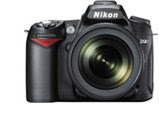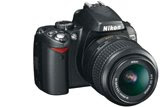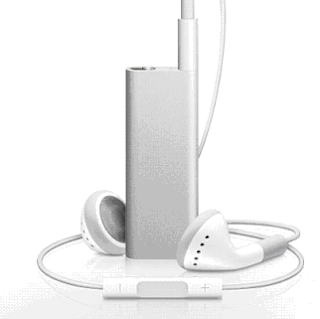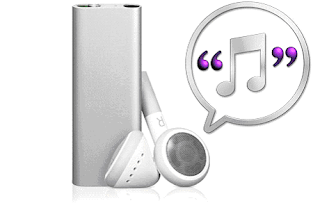It's obvious that design was a main focus of Nokia 7205 Intrigue. The glossy black skin catches the light it's even somewhat reflective and the compact shape will endear it to slim phone enthusiasts. At 3.56 inches by 1.85 inches by 0.55 inch and 3.19 ounces, the 7205 travels well and it slips easily into a pocket or bag. Nokia 7205 Intrigue's sleek lines also are worth mentioning when the phone is open it takes the shape of a smooth arc.
It doesn't exactly cradle the head, but it's certainly a unique touch, and we like the silver trim. The 7205's external display is hidden behind the front face, which means it's invisible when the backlighting is off. Fortunately, you can control the backlighting time, but if it goes off, you can reactivate the display by flipping the volume rocker. In another uncommon touch, the display has a vertical orientation. Though that may not sit well with everyone, the arrangement allows the display to take almost full advantage of Nokia 7205 Intrigue's front face.
You'll find a clock and meters for the signal strength and battery life. The display also has touch controls for the music player. You can activate them by pressing the volume rocker. Though Nokia 7205 Intrigue is eye catching, the trendy design has its low points. The glossy skin attracts fingerprints and smudges to the point of being unsightly. Also, while the hinge is sturdy, the phone's plastic skin feels a tad cheap.
 This is not a phone for the danger prone. You'll find a few other exterior features. On the left spine are the aforementioned volume rocker, a 2.5mm headset jack, and a micro-USB port. The latter also accommodates the charger. The microSD slot is located on the right spine while the camera lens and flash sit on the top end of the phone's back side. Unfortunately, that makes vanity shots difficult.
This is not a phone for the danger prone. You'll find a few other exterior features. On the left spine are the aforementioned volume rocker, a 2.5mm headset jack, and a micro-USB port. The latter also accommodates the charger. The microSD slot is located on the right spine while the camera lens and flash sit on the top end of the phone's back side. Unfortunately, that makes vanity shots difficult.The 2.2 inch interior display supports 262,000 colors and 320x240 pixels. It's bright and vibrant with sharp colors and graphics. You can change the backlighting time, the clock format and the dialing font size. The menus have leftover hallmarks of Verizon's standardized interface, but they're intuitive and easy to use. The navigation array is mixed bag.
On the upside, it's quite spacious and you're offered a fair number of keys. But on the downside, it might be a little too stylish for its own good. The toggle ditches the usual square or circular shapes in favor of a cross. It's certainly unique, but it takes a bit of getting used to. What's more, it's almost flush with the surface of the phone. The remaining controls consist of two soft keys, Talk and End or power buttons, a speakerphone key, a back or clear control, and a camera shortcut.
All are flush with the surface of the phone. The keypad comes in two designs faded silver and faded pink. We reviewed the silver version, but the handsets are the same. Silver ridges separate the individual rows, but otherwise the keys are flat and a tad slippery. We didn't have any problems dialing or texting, however. The keys are lit by a bright backlighting, and the numbers and letters on the keys are standard size.














